We consider the optical fiber connector with different types and configurations essential for the optical fiber cable. Typically, we can categorize multiple fiber optic cable connectors according to various standards such as utilization, fiber mode, fiber count, transmission media, transmission procedure, polishing type, termination way, boot length, etc.
Utilization: Connection of Fiber Connectors with Adapter Panel:
The following fiber optic connectors, like SC/LC/MPO/MTP/ST fiber connectors, need a fiber adapter panel while connecting. We usually use these fiber optic cables with these fiber connector types in telecom rooms, enterprise networks, data centers, etc.
SC Connector:
SC connector was the prime connector we chose for the standard TIA-568, and it's a snap connector latching with an easy push & pull motion. SC signifies "Square Connector" because of the "Square Shape" fiber connector body. SC connector possesses 2.5 millimeters ferrule, two times greater in size thanLC connector. SC connector is suitable for telecom and data-com applications, including passive and point-to-point optical networking. Because of its magnificent performance, the SC connector is a widespread connector for polarization maintaining applications.
LC Connector:
An LC (Lucent Connector) as a small form factor (SMF) connector has a 1.25-millimeter ferrule. The slight footprint pattern gives these optical connectors huge approval within datacoms, making them perfect for excessive-density applications. Many people tend to proceed to high-effective wiring with LC connectors. We consider the LC fiber connector as a connector that we most commonly use at present.
MPO/MTP Connector:
Contrary to the earlier two fiber connectors, we can signify the MPO/MTP connector as a multi-fiber optical connector, which is large compared to other connectors. It combines optical fibers from twelve to twenty-four fibers within one rectangular ferrule, and we often use it in 40 Gigabit and 100 Gigabit excessive-bandwidth fiber optic parallel links. The MPO/MTP connectors are complex because of key-down and key-up, female and male issues.
ST Connector:
ST connector controls the fiber optic with a spring-loaded, ceramic 2.5 millimeters ferrule. We usually use them in short- and long-distance applications like building and campuses MMF applications, corporate networking conditions, and military applications.
FC Connector:
“FC” stands for Ferrule Connector. The FC optical fiber connector was the prime fiber connector to utilize the ceramic ferrule. Contrary to the plastic-materialized LC and SC connector, FC uses circular screw-type equipment made from stainless steel or nickel-plated. The end-face of the FC connector depends upon the alignment key to insert correctly, and then we bind it into the jack/adapter utilizing the threaded collet. Regardless of the additional complication both in installation and manufacturing, the FC fiber connector still provides the choice within precision instruments like OTDRs and the option for SMF. We initially intended it for telecoms and data-coms applications, but its use was less till LC and SC fiber connectors' launch. The utilization of both FC and ST connectors has decreased at present.
The fiber connectors we have mentioned above are the ones we most commonly use. We have introduced them based on their popularities. The picture below manifests the various connector styles:
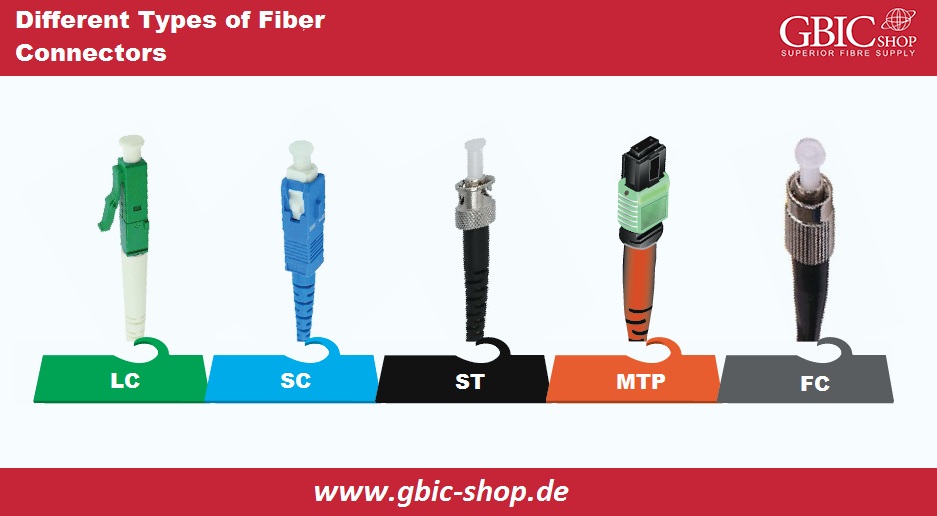
MT-RJ Fiber Connector:
We can signify the MT-RJ connector as a duplex fiber connector. For alignment, it utilizes pins and has female and male versions. We have constructed them using plastic housing and maintain correct alignment through their plastic ferrules and guide pins. Unlike a standard telephone jack, the MT-RJ connector is a little smaller, making it simple to disconnect and connect. Moreover, MT-RJ connectors provide a greater density and lower termination rate for cable management products and electronics than single fiber optic terminations.
MU Fiber Connector:
We use the MU optical fiber connector for compacting different fiber optic connectors and self-retentive mechanisms for backplane implementations. MU fiber connector is similar to a mini SC connector having a 1.25 millimeters ferrule and presents a compact miniature figure and an easy push & pull design.
DIN Fiber Connector:
The DIN fiber connector encompasses different wires that plug within an interface to link to devices. We apply it to MIDI instruments, PC keyboards, and specialized equipment. The DIN fiber connector is circular with pins which we have systemized in a round pattern. Generally, a DIN connector of full size possesses three to fourteen pins having a 13.2mm diameter.
E2000 Fiber Connector:
We use the E2000 optical fiber connector for reliable power and high safety applications. The E2000 fiber connectors are push & pull coupling mechanisms, and they have an automatic shutter of metal in the optical connector as a laser beam and dust protection.
Utilization: Connection of Fiber Connectors with Adapter Panel:
In contradiction to the earlier kinds of fiber connectors, Rosenberger NEX10 and Q-RMC connectors support push & pull fast locking mechanism, and they can realize fast link without utilizing an adapter panel. We have designed them for harsh conditions use.
Rosenberger NEX10 Fiber Connector:
The NEX10 fiber connector is appropriate for harsh outdoor conditions. We can characterize it by its compact size style plus dustproof, waterproof, and corrosion-resistant. This type of connector supports a push & pull and screw-type locking mechanism. This push & pull fast lock supports easy removal and solid installation without any tool. The screw-type locking mechanism is best for the plugs; moreover, the socket maintains a firm connection. Furthermore, its storage & operating temperature for outdoor cables & connectors are between -40~80°celcius, which we often use in Mine-fields, industrial sites, DAS, MIMO, and in-building designs.
Rosenberger Q-RMC Fiber Connector:
The Q-RMC fiber connector is a robust and new industrial connector possessing the MT multi-fiber ferrule of MPO/MTP connector holding 24 fiber optic cores. These connectors incorporate push & pull closing mechanisms, making the optical connector remain connected quicker and simpler even within tight areas, decreasing associated expenses and installation times. These connectors satisfy the demands for safety class IP67. Thus it is dustproof, waterproof, and corrosion-resistant. Moreover, the Q-RMC fiber connector is appropriate for usage in places with immoderate temperatures, and its storage & operating temperature is -40~80°celsius. Thus, we can use the fiber optic wires with Q-RMC fiber connector for mine-field, industrial sites, mobile communication, grid wiring, broadcast, etc.
Fiber Mode: A Comparison between Single-Mode and Multimode Fiber Optic Connectors:
Diversity impacts MMF and SMF connectors regarding collaboration with the optical fibers' corresponding type. SMF enables only one mode of light to move through during one particular moment, whereas MMF can allow different methods during one specific moment. However, with the development of technologies, fiber connectors like LC, FC, and SC are adaptable to multimode and single-mode fiber optic cables.
Fiber Count: A Comparison between Simplex and Duplex Fiber Optic Connectors:
A simplex link signifies sending links on one side. The signal transmission is through the simplex fiber connectors and a simplex optical fiber cable from A device to B device, and it can't come back from B device to A device through a similar route. Contrarily, we can achieve the revised communication via duplex fiber optic cable and duplex connectors, which we call a duplex link. Moreover, we often connect a simplex optical fiber connector with plastic fiber or one fiber strand, whereas the duplex optical fiber connector has to link with three fiber strands.
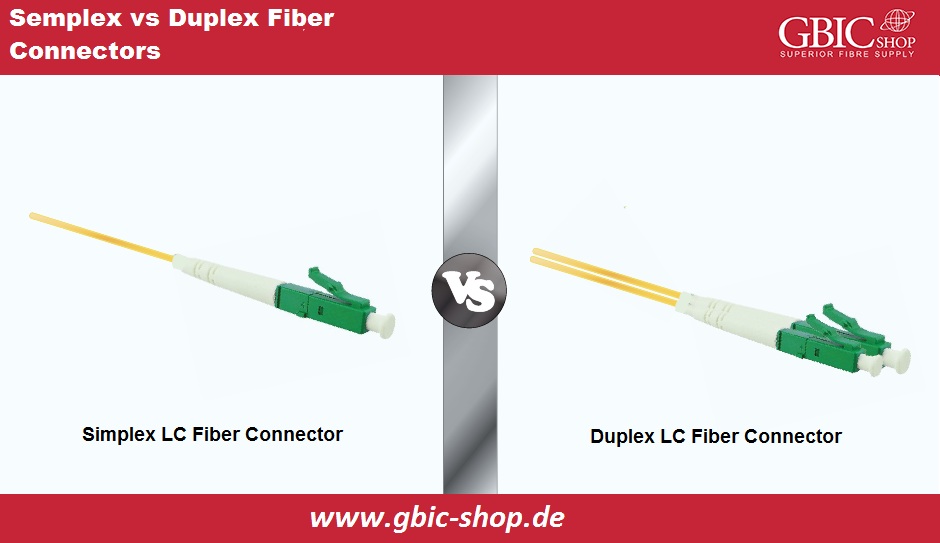
Polishment: APC/UPC/PC Optical Connectors:
Regarding polishment, we can divide the fiber optic cable connectors into APC, UPC, and PC connectors. The color codes provide a convenient way to describe these fiber connectors. APC's color code is green, the color code of UPC is blue, and the color code of the PC connector is black. The performance and structure of these fiber connectors are also different, reflecting upon the uses of return and insertion loss. APC VS UPC VS PC, this article explained these kinds of connectors and their contradictions for you.
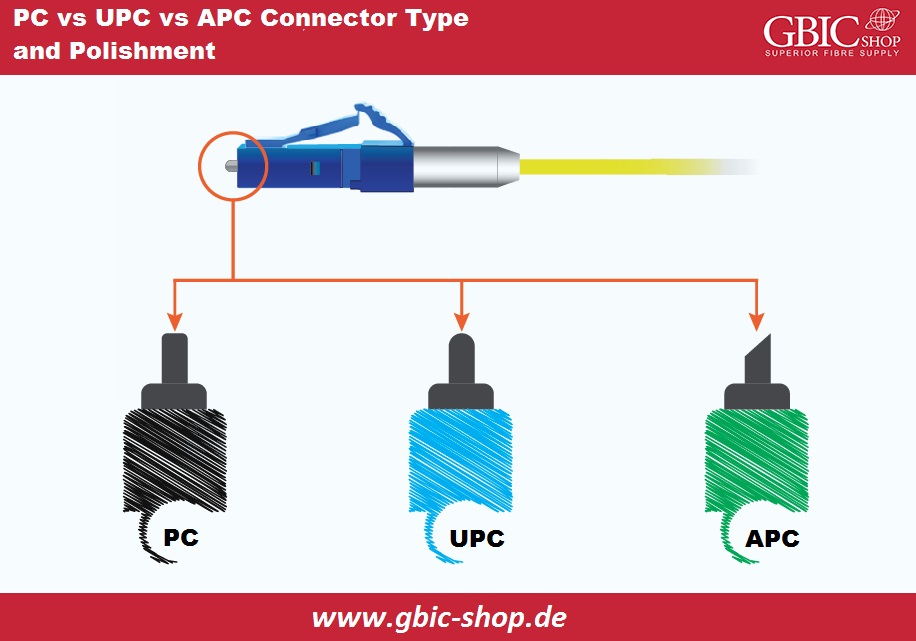
Termination: A Comparison between Field-terminated and Pre-terminated Optical Connectors:
Field termination means closing the end of optical fiber within the field. The process incorporates strip wire, prep epoxy, implement the connector, inspect, polish, and examine for the link requiring skilled technicians and lots of tools to handle the termination.
Factory termination, which we also call pre-termination, signifies cables and fibers, which terminate with a fiber connector within the factory. These pre-terminated wires appear with standard lengths with the installation of the fiber connectors with quality assurance and factory-level accuracy. While decreasing the cumbersome procedure and tools, pre-terminated connectors are easy to install and need less technical expertise.
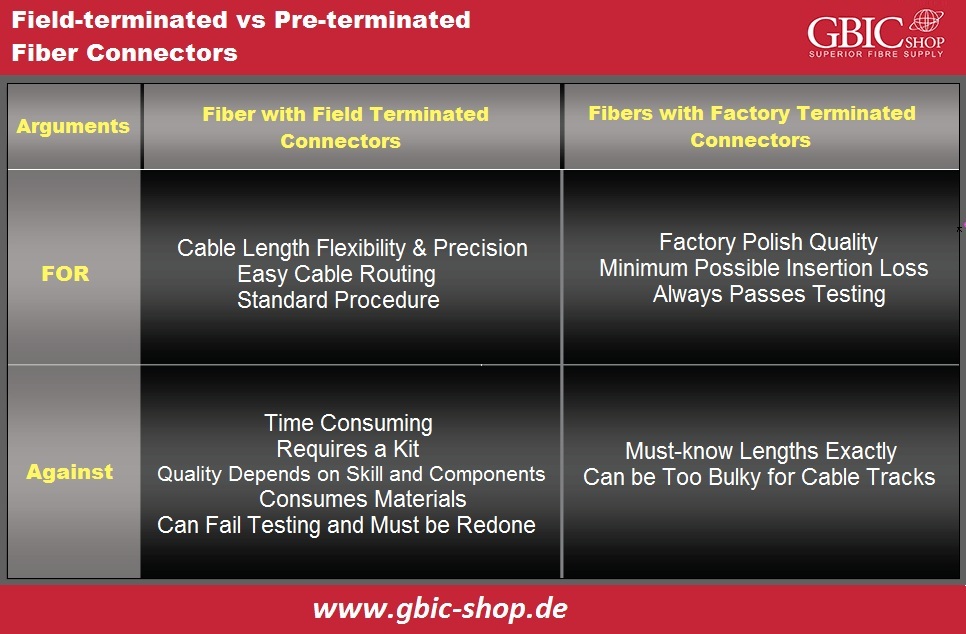
Boot Length: A Comparison between Standard Boot and Short Boot Fiber Connectors:
Regarding boot length, we have short boot and standard boot composition. The traditional boot protects the connector and cable from damage and dislodging of the wires from the body of the connector, etc. Whereas the short boot also has a similar function. For areas where we have limited spaces for connectors, the fast boot cable is a perfect choice. The structure design of the short boot can enable the wire to quickly move through the limited place without sacrificing functioning, making the maintenance and installation of the optical fiber cables more effective.
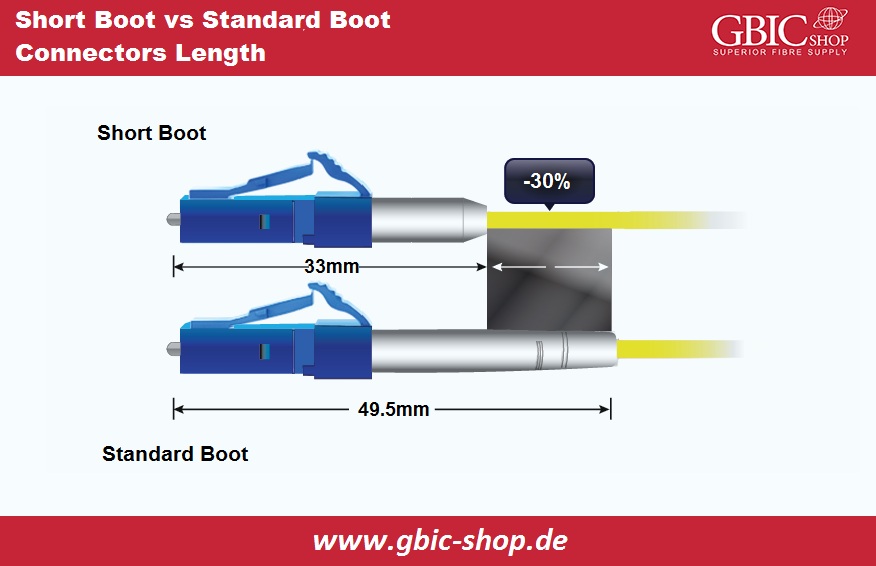
Frequently Asked Questions:
Q1: Do SMF connectors operate on MMF cables?
A: Yes. You may use SMF connectors on MMF, but not vice versa.
Q2: If I install an SC fiber connector and realize that I need an LC connector, how to get that?
A: In this situation, you can buy a coupler SC-SC and a pre-terminated SC-LC patch wire. There is also the availability of the adapter such as LC-SC or LC-LC.
Q3: What kinds of optical fiber connectors are accessible in the market?
A: The standard optical fiber connectors' types are FC, LC, MPO/MTP, and SC. LC is the leading fiber connector, and we prefer it because of its high performance, compact size, and ease to use. Moreover, the MPO/MTP connectors are in demand for 40 Gigabit and 100 Gigabit data transmissions for the multi-fiber optic connectors.
 English
English
 Deutsch
Deutsch
 Espaniol
Espaniol










